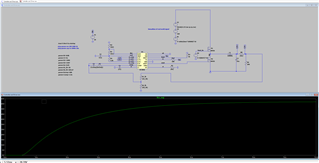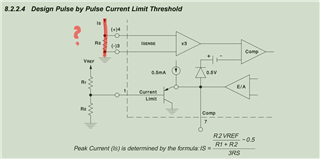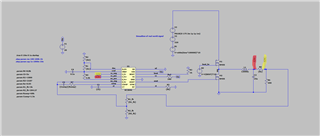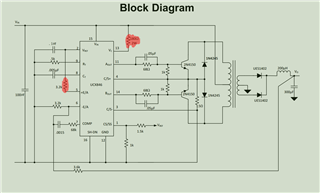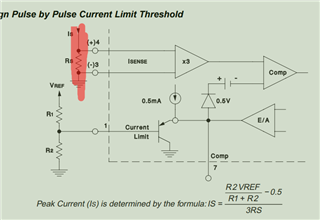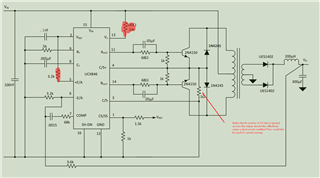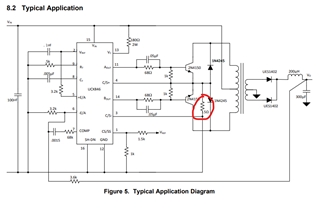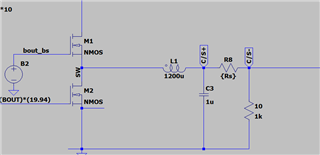Tool/software:
Hi there, so I've been using the UC3846 in my half bridge flyback converter design. I've been simulating it in LTSpice however I have had some trouble with the model. I'm trying to run the chip with a switching frequency of 500kHz However when probing the CT pin (which shows a ramp at the calculated frequency) I just get a dc offset? All my calculations follow the UC3846 datasheet to a tee and I have used matlab to compute them. Both are attached. I've managed to get the design somewhat working at 50KHz but the template I'm using still doesn't seem to quite work, so any recommendations on that would be highly appreciated. I also left the R and C values at the COMP pin as default as I dont know how that works yet6102.Testing.zip


